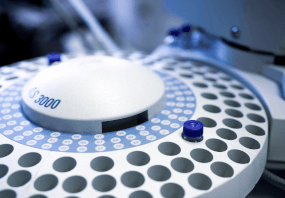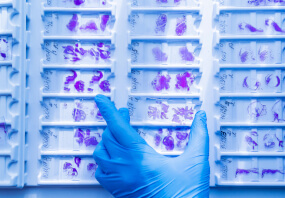General description
L-iditol:NAD+ 5′-oxidoreductase
Sorbitol dehydrogenase (SDH) from sheep liver has a molar mass of 152kDa. The protein is a tetramer of four identical subunits. Each of these subunits has 355 amino acid residues, of which 10 are cysteine residues. Each subunit contains a zinc atom at the active site, which is associated with three protein ligands and a water molecule. The zinc atom associates with the oxygen of the sorbitol hydroxyl or of the fructose carbonyl interconverted during catalysis.
Application
Reduces L-iditol to L-sorbose. Also acts on D-glucitol and other closely related sugar alcohols. Allows the reduction of ketones to polyols (see aldolases for the synthesis of ketoses).
Biochem/physiol Actions
Sorbitol dehydrogenase (SDH) catalyzes the reversible NAD-linked conversion of
Quality
Contaminants: <0.01% ADH, <0.02% GIDH and glucose dehydrogenase, each, <0.05% LDH and MDH, each.
Unit Definition
One unit (U) sorbitol dehydrogenase will reduce 1 mol of D-fructose in one minute at +25 °C and pH 7.6 [triethanolamine buffer; 150 mM fructose (nonsaturating concentration)]. The above assay consumes 1 mol of NADH per mol of D-sorbitol formed.
Physical form
Lyophilizate (60 mg contain 10 mg enzyme protein and 50 mg maltose).
Preparation Note
Activator: The reactions (oxidation or reduction) are fastest in Tris or triethanolamine buffer.
Stabilizers: Maltose is used as stabilizer.
Storage conditions (working solution): An aqueous solution is stable at 2 to 8 °C for several weeks.
Storage and Stability
Store at 2 to 8 °C. (Store the lyophilizate dry.)
Other Notes
For life science research only. Not for use in diagnostic procedures.
- UPC:
- 51172419
- Condition:
- New
- Availability:
- 3-5 Days
- Weight:
- 1.00 Ounces
- HazmatClass:
- No
- MPN:
- 10109339001












